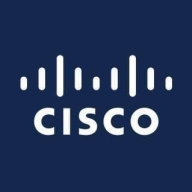

Fortinet FortiGate and Cisco IOS Security compete in the network security category. Fortinet FortiGate leads with pricing and support advantages, while Cisco IOS Security is preferred for its advanced features.
Features: Fortinet FortiGate provides features such as high throughput, application filtering, and VPN support, reflecting a focus on performance and threat detection. Cisco IOS Security is highlighted by its capabilities in comprehensive network management, scalability, and a range of security protocols, focusing on network management versatility.
Room for Improvement: Fortinet FortiGate could enhance its policy management interface, logging capabilities, and expand its third-party integrations. Cisco IOS Security could improve user interface design, simplify deployment processes, and reduce the technical expertise required for initial setup.
Ease of Deployment and Customer Service: Fortinet FortiGate offers simplified setup processes and robust customer support. Cisco IOS Security, while having a higher deployment complexity requiring technical expertise, provides extensive resources and professional guidance to aid its users.
Pricing and ROI: Fortinet FortiGate is more cost-effective with a significant ROI due to its lower costs and comprehensive security features. Cisco IOS Security, although demanding higher initial investments, is justified by its advanced features and overall scalability, making it a worthy choice for enterprises prioritizing robust security capabilities.
The return on investment is satisfactory with Cisco products as they have long lifespans, and our customers are satisfied with them.
Clients are now comfortable and not wasting productive hours on IT support.
The automation part is giving us a cost benefit and speed; we can react faster.
It's a very useful tool to mitigate and protect your enterprise.
My impression is that the support quality has deteriorated over time.
They offer very accurate solutions.
The quick resolution of issues with Fortinet FortiGate is due to the support of the company and the fact that the equipment is easy to work with.
I would rate the technical support for Fortinet FortiGate a ten out of ten.
They scale up really well from smaller models like the FortiGate 40 and 50 to bigger sites with the FortiGate 100 for more throughput - up to enterprise datacenters.
The variation comes in terms of the interfaces and throughputs, but from a security perspective, you get the same benefit, irrespective of whether you have an entry-level unit or an enterprise.
We determine sizing based on multiple factors: number of users, available links, traffic types, server count, services in use, and whether services will be published.
We find Cisco products stable and thoroughly tested before new software or firmware versions are released.
I find Cisco IOS Security to be a very stable product.
We're experiencing 99.999% availability consistently.
I would rate the stability of Fortinet FortiGate a ten out of ten.
Currently, we are experiencing a general outage of one of the main internet service providers of the Dominican Republic, and we have not been impacted in our operations because with SD-WAN, we have another internet service provider and we are working with the second WAN connection without any disruption.
Cisco changes their licensing policy quite frequently, which is becoming confusing and complicated.
Investing in a solution that can accommodate such growth would be more cost-effective than repeatedly purchasing new hardware.
While Fortinet claims to offer a comprehensive network solution, it falls short in addressing computer application issues, particularly server security.
When considering Sophos XG, which we also use, the logging and reporting functionality is notably more efficient.
The cost of Cisco IOS Security for customers is on the higher end of pricing compared to the competition, depending on the targeted customers.
Last year, I renewed the support for three years, which can sometimes be expensive but depends on the security benefits and how it helps us.
It offers cost savings as it is generally cheaper than the competition.
It is about 20% cheaper.
This solution, called Network Access Controller, handles authentication, authorization, and accounting for devices accessing the network.
The best features of Cisco IOS Security are its integration with software management tools such as Cisco DNA Center and Cisco ICE, which provide centralized policy and network access control.
In terms of security, we have not experienced any security flaws or loopholes, and it has proven to be quite stable.
FortiGate has helped reduce the risk of cyberattacks that might disrupt our client's production.
These features help reduce our downtime, manage the ISPs, and deploy SLAs for all the website traffic.
| Product | Market Share (%) |
|---|---|
| Fortinet FortiGate | 20.4% |
| Cisco IOS Security | 0.3% |
| Other | 79.3% |


| Company Size | Count |
|---|---|
| Small Business | 19 |
| Midsize Enterprise | 14 |
| Large Enterprise | 18 |
| Company Size | Count |
|---|---|
| Small Business | 350 |
| Midsize Enterprise | 130 |
| Large Enterprise | 187 |
Fortinet FortiGate excels in providing integrated VPN, firewalling, and Unified Threat Management (UTM) with centralized management and high availability. It supports remote access and comprehensive threat protection, making it a preferred choice for securing networks.
Fortinet FortiGate offers a robust security platform with features such as strong intrusion prevention, application control, and web filtering. Its integration with Active Directory and SD-WAN functionality provides scalable solutions for large networks. Users appreciate its ease of use through centralized management interfaces, ensuring robust security with flexible configurations. However, FortiGate could enhance its graphical interface and technical support responsiveness, address firmware bugs and costly licensing, improve logging, integrate better with third-party tools, and strengthen scalability and memory for log storage. Complexity in configuration and the need for intuitive features are noted challenges, and there's a demand for advanced security, zero-trust capabilities, and AI integration.
What are the key features of Fortinet FortiGate?Fortinet FortiGate is widely implemented across industries like education, finance, and government. Companies use it for firewall protection, VPN, and SD-WAN capabilities, ensuring secure perimeter and data center security. It facilitates remote access management and traffic routing optimization, offering reliable security and connectivity solutions.
We monitor all Firewalls reviews to prevent fraudulent reviews and keep review quality high. We do not post reviews by company employees or direct competitors. We validate each review for authenticity via cross-reference with LinkedIn, and personal follow-up with the reviewer when necessary.